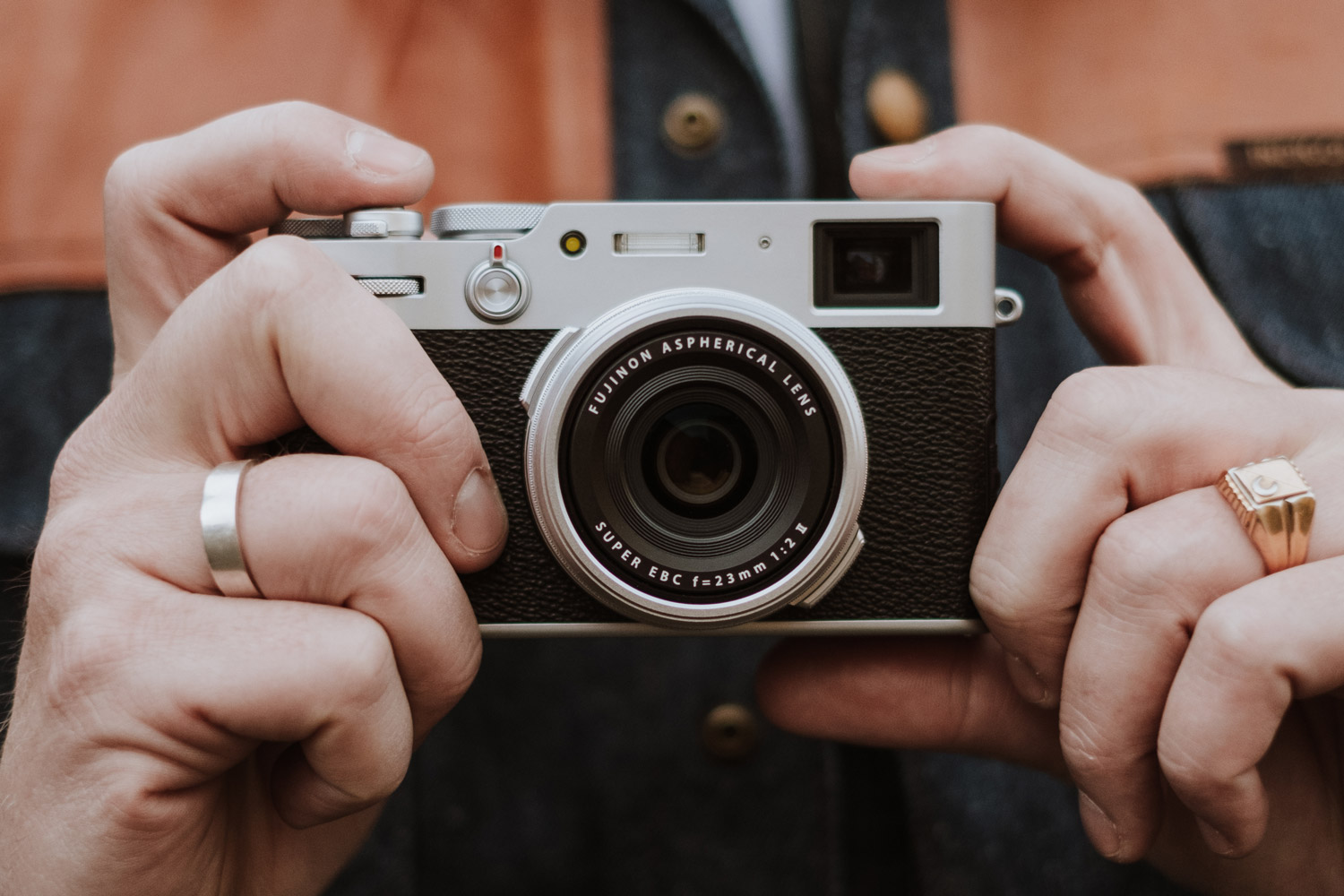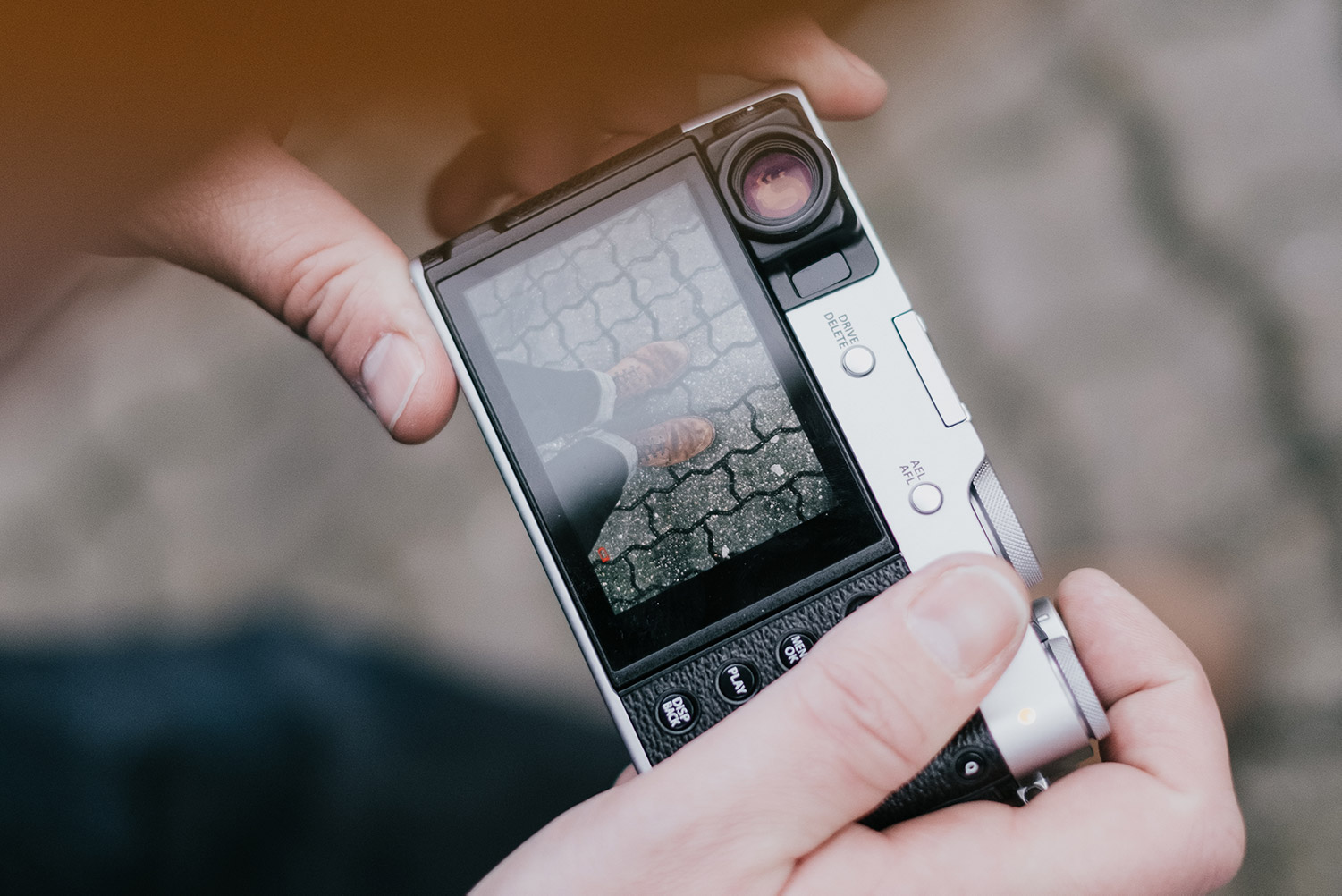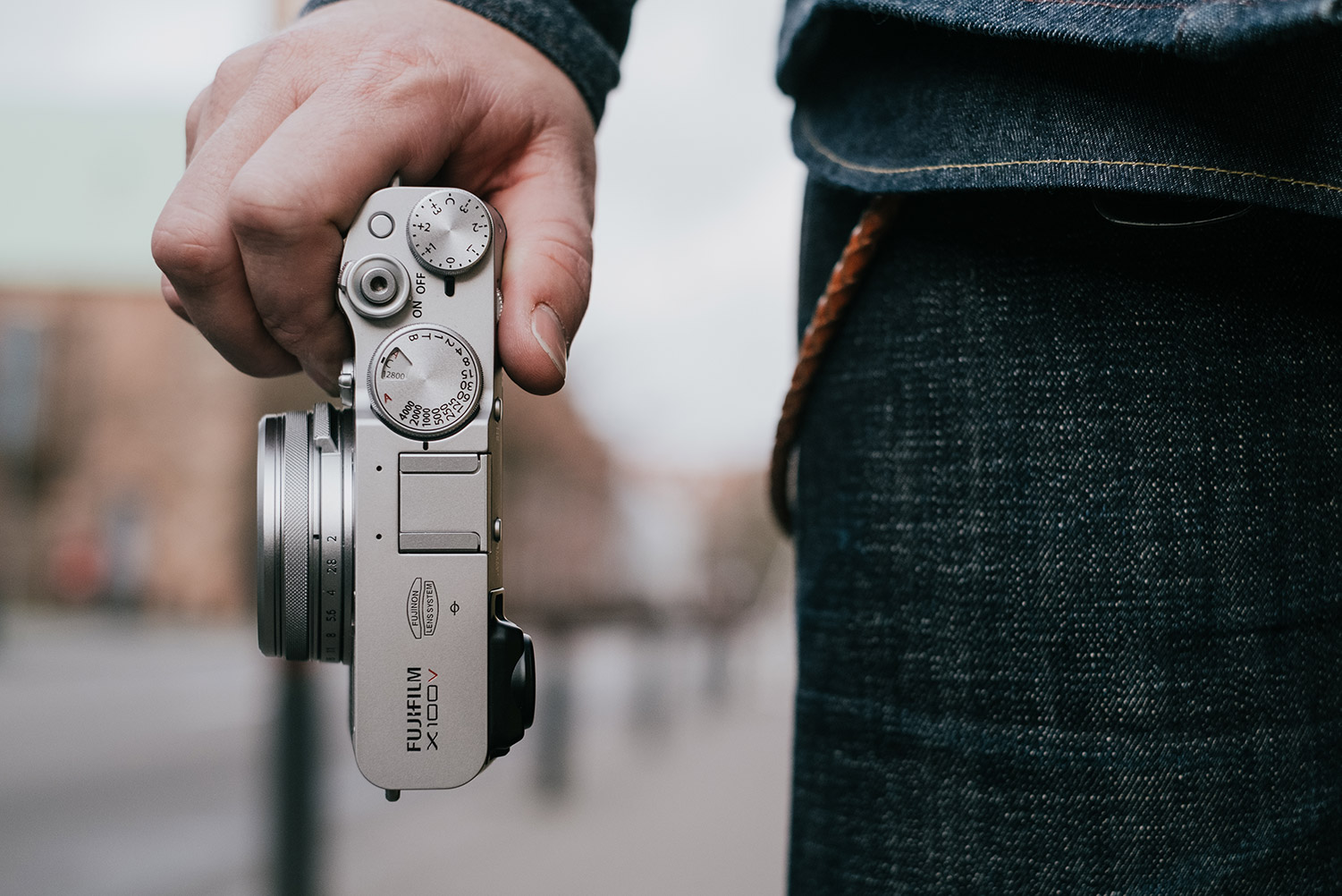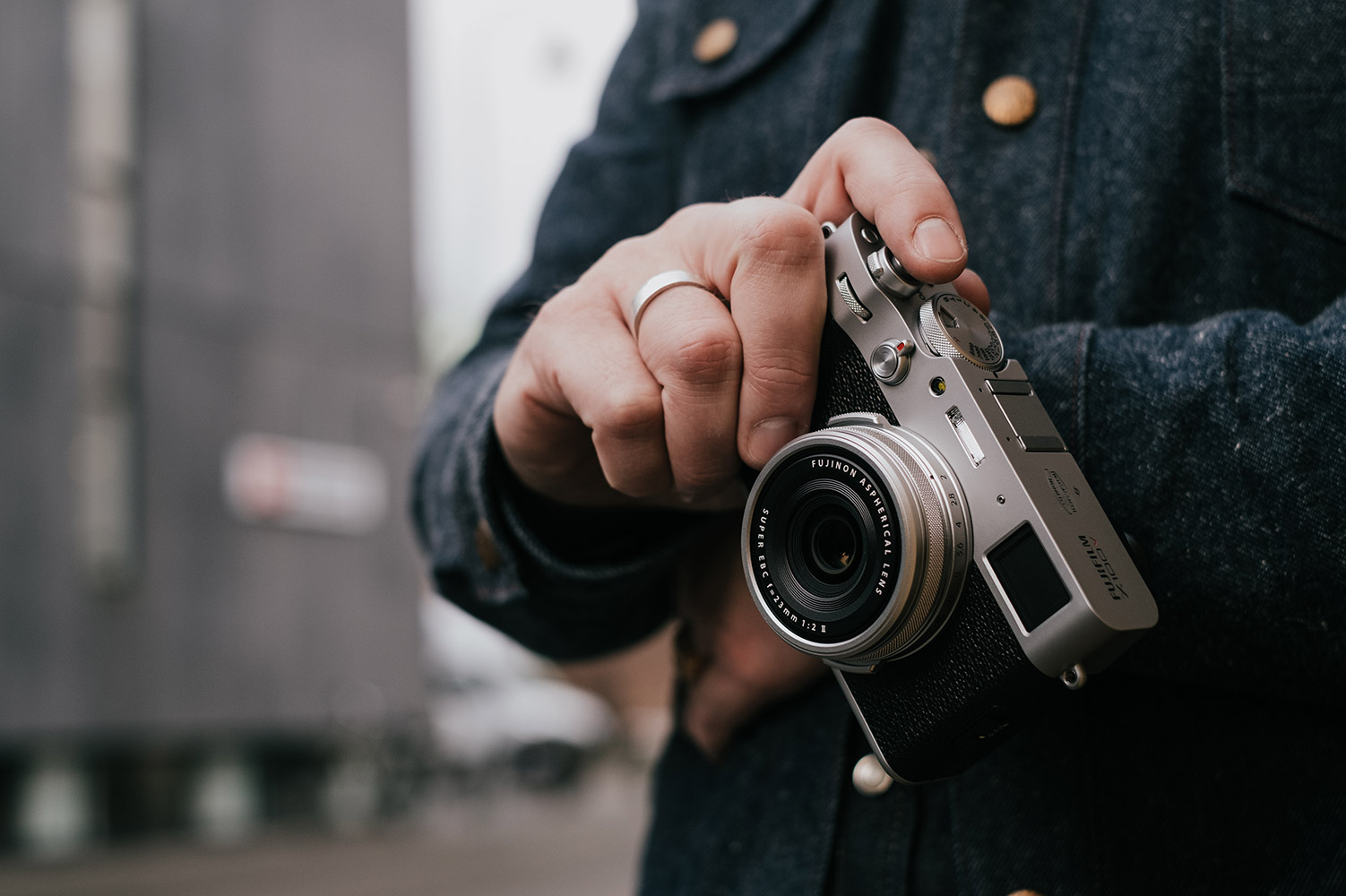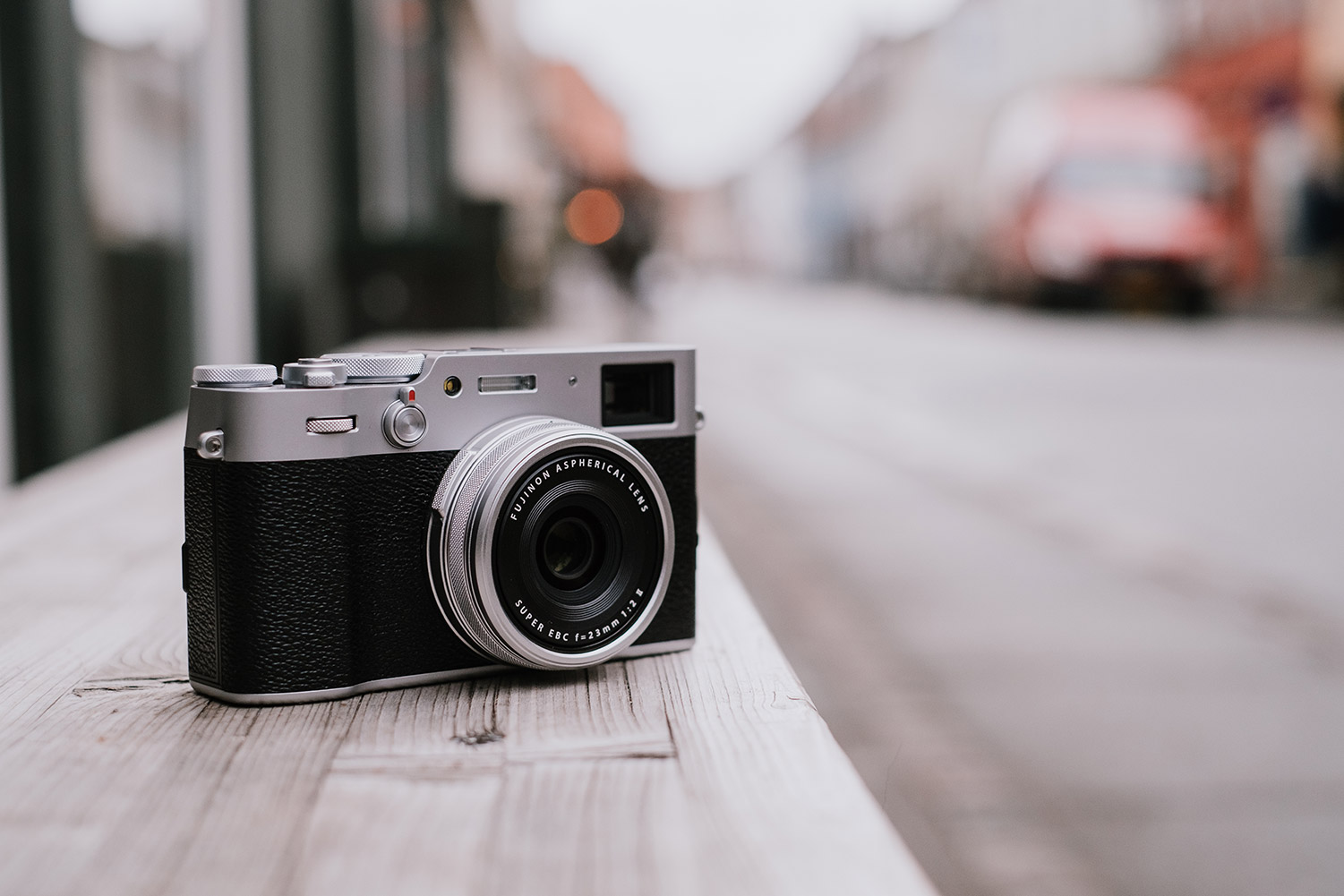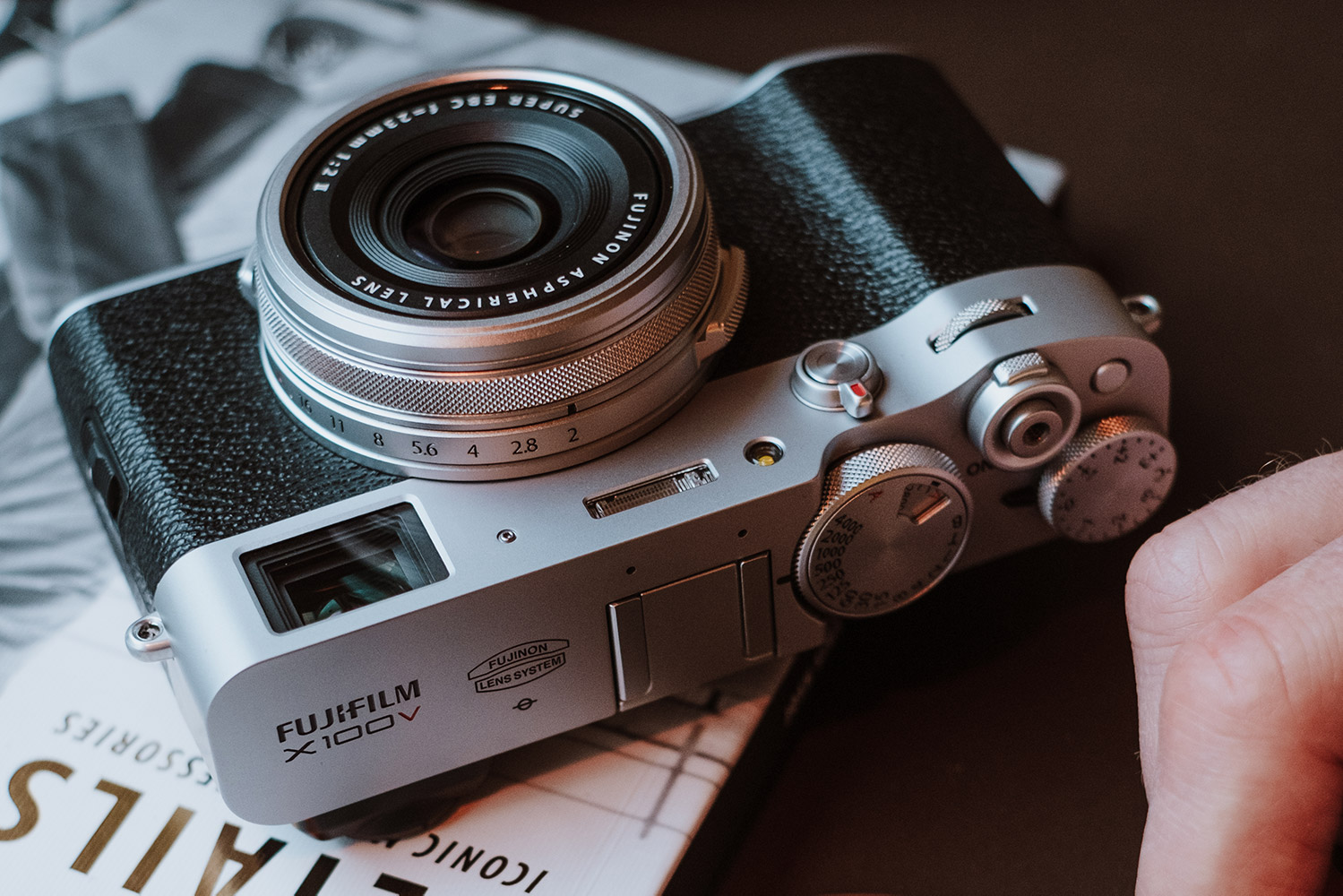With its fixed lens, hybrid rangefinder, and classic styling, the Fujifilm X100 series has always been the digital camera for analog lovers, but that hasn’t stopped Fujifilm from packing new tech into the latest model. Announced February 4, the $1,400 X100V introduces a new lens while also inheriting the sensor, processor, and even some of the video capabilities of the flagship Fujifilm X-T3.
From eye-detection autofocus to advanced 4K movie options, the X100V is loaded with features that fans of the series almost certainly don’t need — or at least think they don’t. But we love the approach Fujifilm has taken, marrying high-tech with classic design and functionality to deliver an advanced point-and-shoot that should easily outclass the few other rivals that exist in this space.
There is also one new feature that current X100 owners have long wanted. The X100V is the fifth camera in the series, but the first to feature a redesigned lens, arguably the most important component of a fixed-lens camera. While the 26-megapixel X-Trans CMOS 4 sensor should offer the same modest improvements we first saw in the X-T3 and X-T30, the bigger boost to image quality is likely to come from that lens.
The focal length and aperture are unchanged at 23mm and f/2, but Fujifilm claims improved sharpness, distortion, and close-focus performance. The lens still uses eight elements in six groups, but now employs two aspherical elements compared to just one in older models. Despite the new design, the packaging remains the same — X100 photographers who already own wide- or tele-conversion lenses will be able to continue using them on the new camera.
Autofocus performance should also get a boost from the X Processor 4. Not only does it promise to be faster, but face- and eye-detection is also available, a feature that we found to work well on the X-T3 and X-T30. While experienced X100 shooters may prefer using manual zone or hyperfocal focus methods, eye-detection gives photographers a new way to ensure sharp shots while shooting from the hip, potentially changing how street photographers work.
The hybrid viewfinder, a key feature of the X100 series since the beginning, has also seen a significant upgrade. While the optical portion is the same, the electronic side now uses an OLED panel with 3.69 million dots, over a million more compared to the X100F. The LCD screen also now tilts, an improvement over the fixed screen of previous X100 models.
4K video comes to an X100
Perhaps the most surprising new features come to the video mode. Video on the X100 was always something of an afterthought, but the X100V now shoots 4K in both DCI (4,096 x 2,160) and Ultra HD (3,840 x 2,160) resolutions at 24 or 30 frames per second and a bit rate of 200 megabits per second. What’s more, the camera can even output 10-bit 4:2:2 video over HDMI into an external recorder. Both Fujifilm’s F-log flat color profile and the cinema-focused Eterna film simulation — something we really liked when we first tried it on the Fujifilm X-H1 — are included.
As much as the X100 has never been a camera to sell itself on tech, we have to applaud Fujifilm for going all-out. Where other companies are often quick to cut features on certain models to keep product lines clearly delineated, Fujifilm has learned that if there’s no technical reason not to include something, you might as well include it. Eye-detection focus and 4K video are unlikely to extend the X100V’s appeal beyond its core niche, but these features bring new creative options to series fans should they choose to embrace them.
The Fujifilm X100V is available for preorder and will ship in late March.
